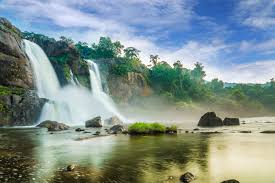Dive into the intricate tapestry of India’s water resources, from the majestic Ganges and Brahmaputra Basins to the pristine rivers of the Northeast. This article unravels the complexities of India’s water landscape, highlighting challenges, achievements, and sustainable solutions in the realm of water conservation and management.
India, with its vast and diverse landscapes, is home to a wealth of water resources that sustain life and livelihoods across the nation. The Ganges and Brahmaputra Basins, comprising 60% of India’s renewable surface water, stand as mighty arteries of life, nourishing millions in their course. Meanwhile, the alluvial aquifers that blanket one-third of India’s territory in the Indo-Gangetic Plain hold half of the nation’s renewable groundwater reserves, serving as vital reservoirs for agriculture, industry, and communities.
Despite its abundance, India faces pressing challenges in water management and conservation. With 18% of the world’s population but only 4% of its water resources, the nation grapples with the imperative to balance water demand with sustainability. Industrial and agricultural activities, coupled with untreated sewage discharge, pose significant threats to water quality, exacerbating contamination of surface and groundwater sources.
Amidst these challenges, pockets of hope emerge, showcasing India’s commitment to water conservation and sustainability. The northeastern region, with its lush landscapes and abundant water bodies, stands as a beacon of ecological richness. The Umngot River in Meghalaya, acclaimed as India’s cleanest river, epitomizes the pristine beauty and purity of these natural wonders.

Furthermore, cities like Indore lead the charge in water conservation efforts, earning accolades as India’s first ‘Water Plus’ city. Through innovative initiatives like rainwater harvesting and groundwater preservation, these cities set a precedent for sustainable urban development.
However, the journey towards water sustainability demands collective action and responsibility. While bottled mineral water remains a convenient option for travelers, the proliferation of single-use plastic bottles poses grave environmental concerns. Embracing reusable water bottles equipped with purification technology or water purification tablets offers a sustainable alternative, reducing plastic waste and safeguarding precious water resources for future generations.
In essence, India’s water story is a tale of resilience, challenges, and hope. By embracing sustainable practices, harnessing technological innovations, and fostering community engagement, the nation can navigate the complexities of water management, ensuring a future where clean, accessible water flows freely for all.
#IndiaWaterResources #WaterConservation #SustainableDevelopment #NortheastIndia #UmngotRiver #IndoreWaterInitiatives #PlasticWasteSolution



